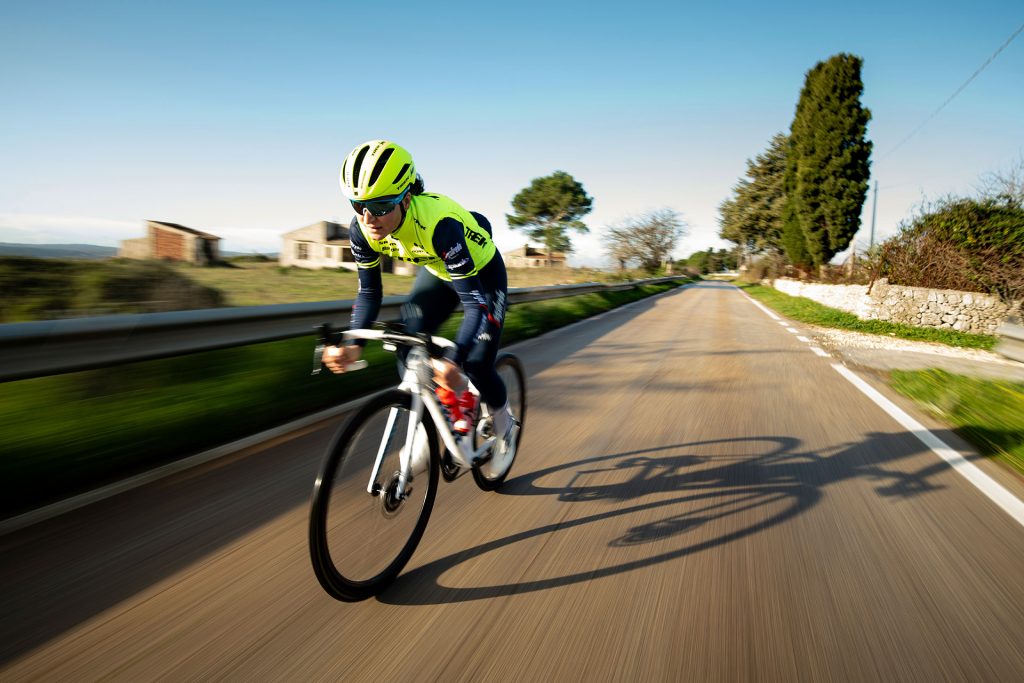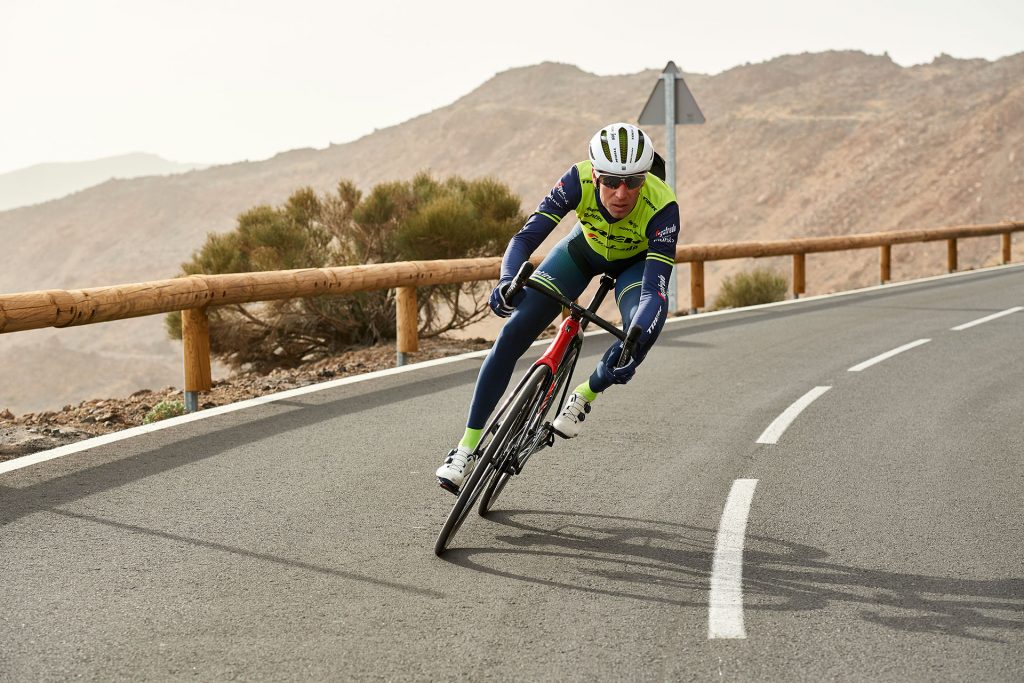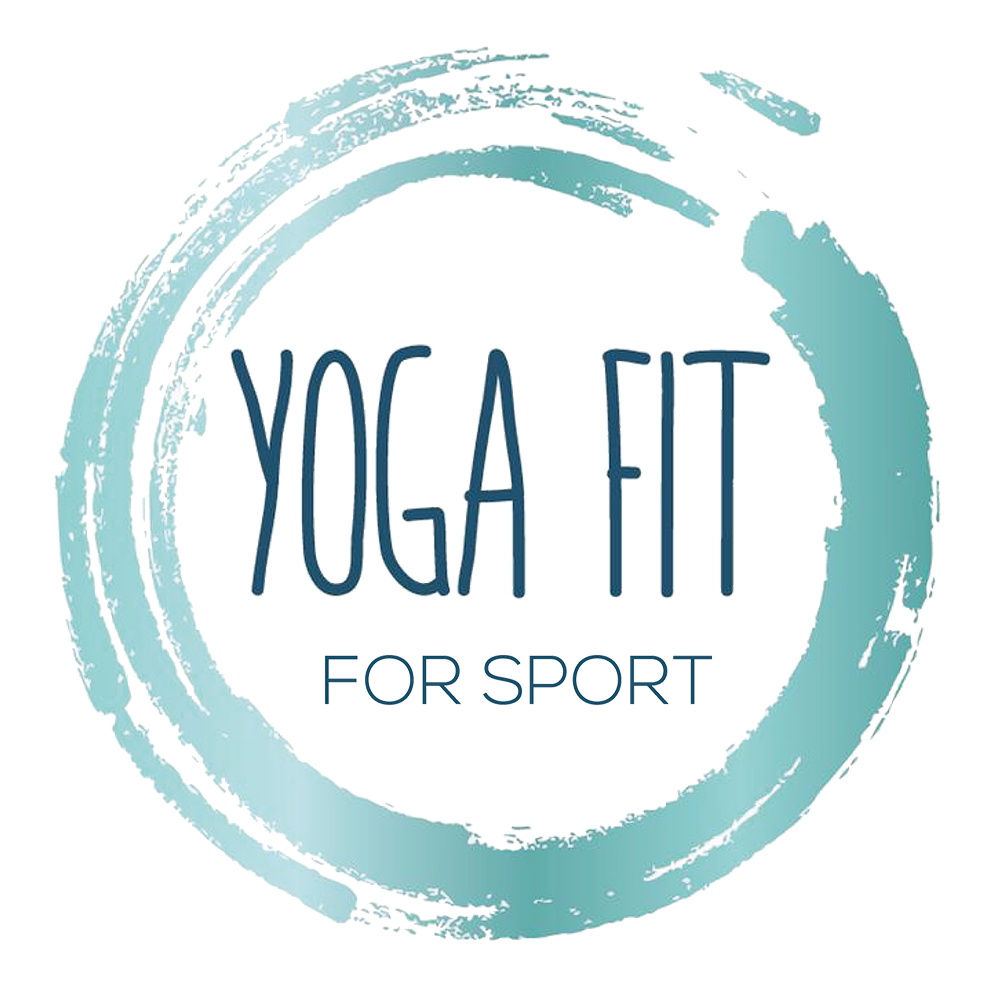Yoga Fit for Sport
Bike
The nature of cycling is that we’re predominantly in a fixed position, with only the legs moving up and down in the sagittal plane. This invariability of movement, with the position itself being quite unnatural for the body, combined with the fact that cyclists ride for many hours at a time, make imbalances and tightness in certain areas very likely. Left unchecked, this can lead to injuries, pain or discomfort, or simply a body that struggles with everyday movement patterns.
The risk is compounded further if the cyclist only cycles and there is no cross training. Even more so, if a lot of time is then spent sitting at a desk or on the sofa, as these mimic a similar posture. Unfortunately, this is quite often the case for cyclists, as cycling itself simply takes so much time and energy!
Cycling Biomechanics
The cycling position creates chronic flexion in the back. This, combined with weight distribution on the hands for long periods of time means shoulders can become hunched and painful. Cyclists who put in big hours on the bike will usually have a lack of mobility in the shoulders and tight and weak trapezius muscles. Because of this, many cyclists will struggle to lift their arms straight up. This can be risky if they then try to perform movements like swimming or lifting weights overhead, as without the right mobility, these exercises can lead to issues such as shoulder impingement syndrome.
The hunched position on the bike and the relatively closed angle of the hip, causes a shortening of the hip flexors. These factors combined can lead to tension and pain in the lower back. Short hip flexors can also mean a tendency toward an anterior pelvic tilt, more so when off the bike, which can aggravate the back further. They can also lead to weak glutes, something cyclists will want to avoid, as this results in a loss of power.
Pedalling is a highly repetitive motion that works only in the sagittal plane; up and down. This means there isn’t much variability of movement for the hip joint, which is designed to rotate dynamically in 360 degrees. Because of this, there will be some adaptive shortening, usually at the side of the hip, creating tightness at the iliotibial band (ITB). In more serious cases this can also manifest as lateral knee pain, or ITB syndrome.


Power to the legs is initiated in the core. Therefore, a strong core means a more efficient transfer of power to the pedal. It may be surprising then, that a weak core is common among cyclists. You can spot an inefficient core from things like a bobbing action, too much swinging, or instability on the bike. This is because cycling itself does little to strengthen the core, unless you’re pulling on the handlebars in situations like an attack or a steep climb. However, these are usually for short bursts and aren’t really enough to build the kind of core required for strong and efficient cycling.
The neck is working in an opposite manner to the back. It is chronically extended due to the need to look up and see where you’re going. This is quite an unnatural position for the neck, particularly for hours on end, so tension and discomfort is common.
In summary, whilst an excellent sport for getting super fit, the effects of the cycling position aren’t great for our bodies. The good news is there are things we can do to mitigate these negative side effects and improve cycling performance at the same time.
The hip flexors require a delicate balance of strengthening and lengthening. They should be lengthened to a certain degree, to allow counteraction from their shortening due to the pedalling function. However, the hip flexors also need to be strong and fast, so they assist in the upstroke of the pedal. This ‘snappiness’ of the hip flexors will limit the deceleration of the power we’re putting down on the opposite pedal and therefore make us faster. Strong and mobile hip flexors also assist in achieving and sustaining an aero position.
The posterior chain is another area that requires a delicate balance of strength and length. The glutes should be strengthened, as this is an area responsible for big power output. We also want to strengthen the back muscles, to reduce the likelihood of pain in the future and to allow the back to work safely into extension, a counteraction from the chronically flexed cycling position. However, a certain amount of length or freedom in the posterior chain is also required so that the cyclist can get into an aero position and allow for a more aggressive bike fit. Mobility in the upper back can also help with the ‘shoulder tuck’, which reduces their size and improves aerodynamics.
Building a strong core not only allows a cyclist to generate more power, but be more efficient in transferring that power to the pedal. It helps to think of and train the core as a whole cylinder of the mid-body, which includes deep stabilising muscles, not just the superficial layers, i.e the six-pack muscles. When this is trained effectively, we can simultaneously increase power and reduce the chances of back pain.
Tension in the neck can be released by counteracting the chronic extension that is required whilst on the bike with some gentle flexion. Tight quadricep muscles can also benefit from a little stretching.
Given that cycling only requires movement in the sagittal plane, some exploration into other planes is required to bring balance to the body for functionality in everyday life. Therefore, some lateral (side) bending, twisting and moving the hip and shoulder joints through their full range of motion should also be included in a yoga for cycling programme.
Most cyclists can benefit from breath-work practise. Nasal breathing, breath retention and hypoventilation practises can be used to facilitate optimum oxygen uptake in the blood and increase oxygen delivery to the working muscles.
Breath-work practises such as these, increase an athlete’s tolerance to carbon dioxide. This allows for greater physical exertion for less perceived effort, which is helpful for Vo2 max work.
These exercises can also be used in a similar manner to prepare for, or simulate high altitude training. Once accustomed with these practises, the breath can be used to lower the heart rate when desired, which is useful for recovery sections on rides or races.
We can also use the breath to ramp up the parasympathetic nervous system. This is the optimum state for recovery and boosting the immune system, amongst a long list of other benefits. It is a great skill to learn that cyclists can opt into when needed, be it for recovery purposes, or to simply keep calm on race days.

